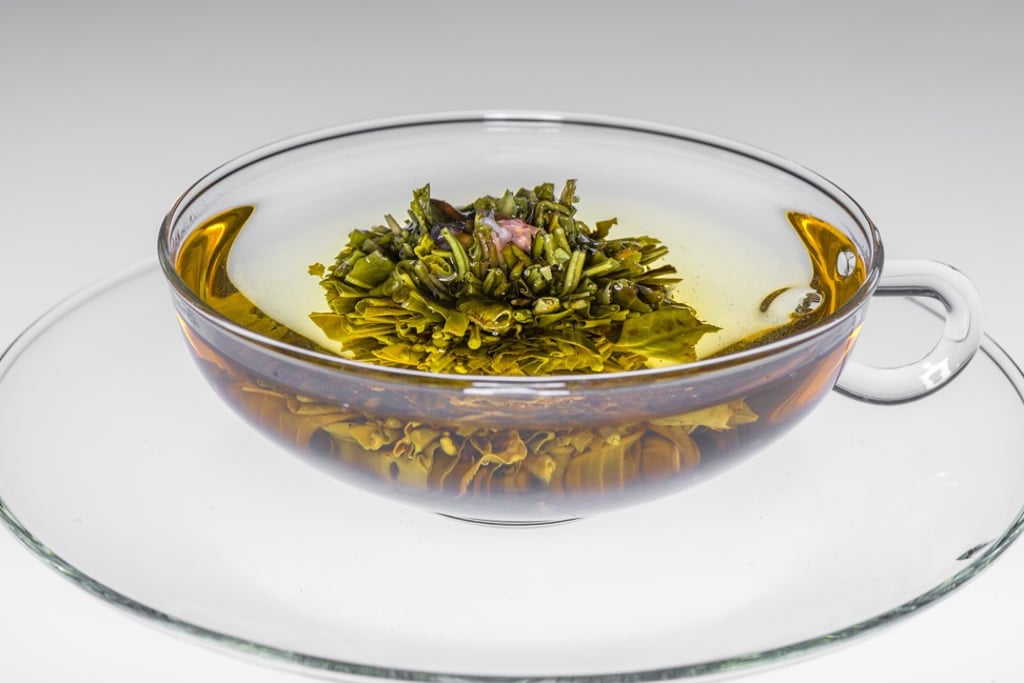Georgia is brewing up a tea revolution under Chinese influence

Tea drinking has made a fashionable comeback thanks to the country’s independence and Chinese influence, and producers are making unique blends
On a balmy spring evening in central Tbilisi, tea sommelier Anna Vartanova is getting ready for a Chinese tea ceremony and demonstration in her tea studio. As far as Chinese tea ceremonies go, Vartanova’s could not be more modern. With marmalade-coloured locks and in a tomato-red dress paired with knee-length leather boots, Vartanova exudes the airs of an art student. Here in her flat, she sits cross-legged in a velvet-cushioned chair, and in front of her are her implements.
Vartanova blends the Chinese kung fu tea ceremony with Georgian hospitality and techniques in more ways than one. Over and above the usual equipment required for a tea ceremony – brewing tray, teaspoon, Pinming cups – she uses wine decanters and glasses to brew and dispense her tea. By using implements associated with wine, she attempts to draw parallels to the centuries old Georgian wine tradition to that of the equally old Chinese tea tradition. Vartanova is among the new breed of tea enthusiasts who aim to bring the art of Chinese tea drinking and luxury teas to Georgia through her tea-drinking ceremonies.
Tea entered Georgia when Georgian prince Miha Eristavi was introduced to it during his travels in China in the early 1800s. So enamoured was the prince by its taste that even as it was forbidden by the Chinese, he stealthily brought tea seeds with him back to Georgia. His efforts at growing tea was successful but subsequently, when Georgia came under Soviet rule, tea production was industrialised.
After the country became independent, however, Georgian tea gardens went into disuse for lack of a market within the country. In 2017, Georgia celebrated the 170th anniversary of the beginning of its tea cultivation. Now, entrepreneurs like Vartanova are paving the way for renewed interest in Georgian teas.
Vartanova is the project manager of Georgian Organic, an association founded by Shota Bitadze, a pioneering tea expert who taught her the craft. A Taoist tai chi practitioner with kind eyes and a full pate of silver hair, Bitadze is at the forefront of the Georgian tea revival, and he constantly experiments with new flavours at his tea outlet, which doubles up as a museum in Tbilisi’s chic Sololaki neighbourhood. His recent invention is tea brewed with sun-dried Kvenchkara leaves, from a type of coveted Georgian wine grape. It is not commercially available yet, but Bitadze willingly parts with small amounts of tea to visitors who stop by at his outlet, asking for interesting new flavours.
Elsewhere in Europe, where Chinese tea has been long held as a symbol of sophistication and good life, discerning consumers with a penchant for elusive flavours seek out more exclusive teas from China. Germany is considered to be the biggest market for Chinese teas in Europe, and largely via Hamburg.


